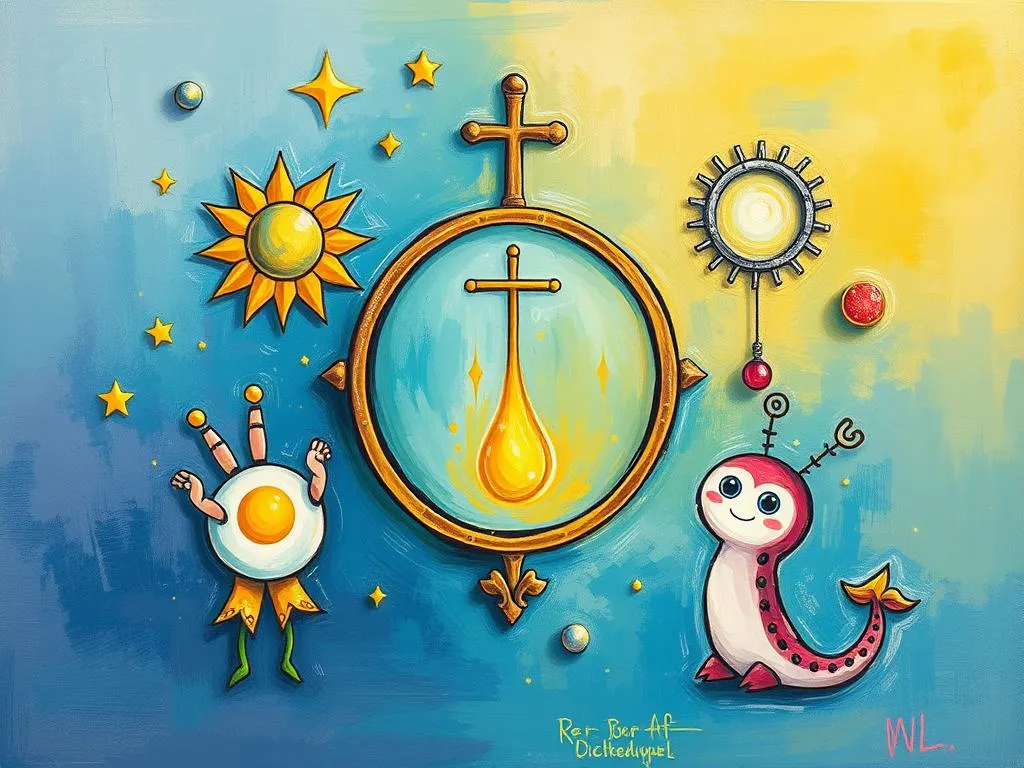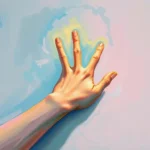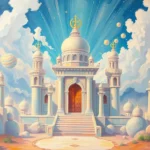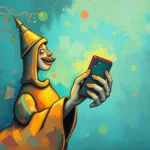
Dreams have long fascinated humanity, serving as a window into the subconscious mind. They often reflect our deepest fears, desires, and emotions, intertwining the mundane with the profound. Among the most captivating aspects of dreams are the symbols that populate them—especially ancient symbols that have transcended time and culture. These symbols can reveal rich layers of meaning and provide insights into not only our personal lives but also the broader human experience. Understanding the significance of these symbols can help us navigate our waking lives more effectively, making the exploration of dream symbolism a compelling endeavor.
Symbolism and Meaning
In dreams, symbols serve as the language of the subconscious. They can arise from personal experiences or collective cultural meanings, often reflecting deep-seated archetypes. Ancient symbols, in particular, carry a wealth of historical significance and can evoke powerful emotions, resonating with dreamers on multiple levels.
For instance, consider the snake, a symbol that appears across various cultures. In some traditions, snakes represent transformation and healing, evoking the idea of shedding old skin to embrace new beginnings. In other contexts, however, they may symbolize danger or betrayal. This duality illustrates how the same symbol can have vastly different meanings based on context, the dreamer’s personal associations, and cultural background.
Another common ancient symbol is the circle. Universally, circles represent unity, wholeness, and infinity. In dreams, encountering a circle might indicate a quest for completeness or a desire to return to a state of balance. Conversely, if the circle is broken or distorted, it could suggest feelings of disconnection or incompleteness in the dreamer’s life.
The tree is yet another powerful symbol frequently found in dreams. Trees often signify growth, stability, and connection to one’s roots. An ancient symbol of life and wisdom, a tree in your dream might indicate that you are experiencing personal growth or a need to reconnect with your heritage. The condition of the tree—whether it is flourishing or withering—can further inform the dream’s meaning, reflecting your emotional and psychological state.
Additionally, water serves as a prominent ancient symbol in dreams, often representing the unconscious mind, emotions, and spiritual journey. Calm waters might symbolize peace and clarity, while turbulent waters could indicate emotional turmoil or confusion. The depth of the water, whether shallow or deep, can also suggest the level of insight or understanding you possess regarding a particular situation in your life.
These symbols, while ancient, invite modern dreamers to engage in a dialogue with their own experiences. By reflecting on personal feelings and cultural narratives associated with these symbols, individuals can begin to uncover deeper meanings and insights within their dreams.
Key Scenarios and Variations
Dreams featuring ancient symbols can manifest in myriad scenarios, each offering a unique lens through which to interpret the meaning. For example, a dream about a snake might take place in a serene garden or a dark forest. If the snake is peacefully coiled around a branch in the garden, this could signify a positive transformation or healing experience. However, if the snake is menacingly approaching in a shadowy forest, it might indicate feelings of fear or impending danger in waking life.
Similarly, envision a dream where you encounter a circle. If you find yourself walking within a perfectly drawn circle, it may suggest a feeling of safety or a desire for structure in your life. On the other hand, if you are trying to escape an entangled, chaotic circle, it could reflect feelings of being trapped or confined by certain circumstances or relationships.
When it comes to trees, the context can greatly alter the interpretation. A dream featuring a majestic, ancient tree may symbolize a connection to ancestral wisdom or a strong foundation in life. Conversely, a dream where you witness a tree being cut down could evoke feelings of loss or the need to reassess your stability and growth in life.
Water, too, can vary dramatically in its representation. A dream featuring a tranquil ocean might evoke feelings of serenity and the vastness of possibilities, while a stormy sea could symbolize emotional upheaval or uncertainty. The presence of a river might indicate a journey through time, suggesting that you are moving through life’s changes, while stagnant water could represent stagnation or unresolved emotions.
By examining these scenarios and variations, dreamers can unlock a broader understanding of how ancient symbols interact with their personal narratives. It’s important to consider not just the symbols themselves, but also the emotions and thoughts they elicit during the dream. This introspective approach can yield a more nuanced interpretation of the dream’s significance.
Real-Life Connections and Takeaways
Understanding the significance of ancient symbols in dreams can have a profound impact on our waking lives. These symbols often reflect underlying emotions, challenges, or aspirations that we may not be fully aware of. By connecting the themes in our dreams to real-life situations, we can gain valuable insights and facilitate personal growth.
To begin this self-reflection, consider keeping a dream journal. Recording your dreams can help you identify recurring symbols and themes over time. Reflecting on these entries can reveal patterns that may correlate with your waking experiences. For example, if you frequently dream of water, take note of your emotional states during those dreams and how they relate to your current life circumstances. Are you feeling overwhelmed? Are you navigating a significant change? Your dreams may be urging you to address these feelings.
Additionally, take time to explore your personal associations with the symbols that appear in your dreams. What do snakes, circles, trees, or water represent to you? This personal symbolism can deepen your understanding of the messages your subconscious mind is attempting to convey. Engaging in creative expression—whether through art, writing, or movement—can facilitate this process, allowing you to explore these symbols in a tangible way.
It can also be helpful to engage in mindfulness practices. By cultivating a sense of awareness and presence in your daily life, you can better tune into the emotions and thoughts that arise from your dreams. This mindfulness can enhance your ability to navigate challenges and embrace opportunities for growth.
Finally, consider seeking out resources on mythology and symbolism. Delving into the historical and cultural contexts of ancient symbols can enrich your understanding of their meanings. Books, workshops, or online courses can provide deeper insights into how these symbols have been interpreted across cultures and time periods, allowing you to connect with a larger narrative.
In summary, the ancient symbols that appear in dreams are not mere figments of imagination but powerful reflections of our inner worlds. By engaging with these symbols and their meanings, we can foster personal growth and enhance our understanding of ourselves and our lives. As you reflect on your dreams, allow yourself to embrace the richness of these symbols, recognizing that they hold valuable wisdom waiting to be uncovered.
In conclusion, the exploration of ancient symbols in dreams serves as a bridge between our subconscious and conscious selves. By reflecting on their meanings, variations, and connections to our waking lives, we can embark on a journey of self-discovery and transformation. Dreaming is not just an escape from reality; it is an invitation to explore the depths of our psyche and uncover the wisdom that lies within. Embrace your dreams, and let the ancient symbols guide you on your path to understanding and growth.







